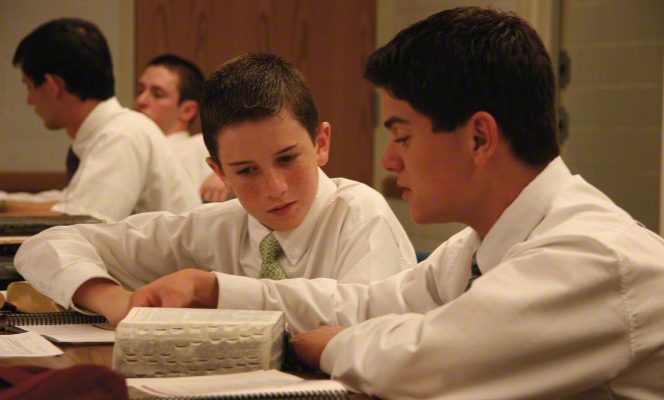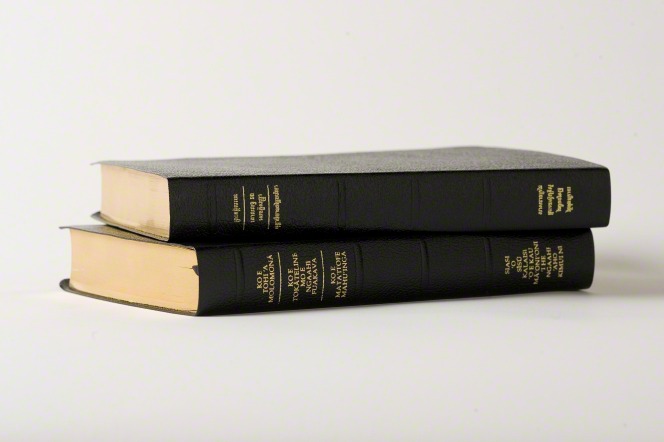
The Come Follow Me youth curriculum for the month of June is all about the priesthood and priesthood keys. You may be wondering how to explain the importance of the priesthood to the youth. You may also be wondering how to explain to the Young Women why they do not hold priesthood keys. Don’t fear teaching the lesson in the upcoming month, here we have additional ideas to help the lesson go smoothly.
Scriptures to Focus On
1. Doctrine & Covenants 65:2 this scripture is about how the priesthood keys are restored upon the earth and how they will help to spread the gospel to the world.
2. Matthew 16:18-19 this shows us that the ordinances we perform on earth will also be performed in heaven; a good scripture for discussing temple work and the priesthood.
3. Doctrine and Covenants 121:34-46 these scriptures tells us that in order to use the priesthood, we must be worthy of it. Though there are a lot of scriptures here, they have a lot of doctrine and principles packed into them. You may want to split these scriptures up in sections to discuss.
Questions
1. Why is having the priesthood so important?
2. When have you witnessed the blessings of the priesthood? (You might want to ask someone before class if they would be willing to share an experience. Doing so will give them more time to think about it as well.)
3. How does the priesthood affect my life? (This is a great question to ask the Young Women. Lead this into a discussion about women and the priesthood.)
Activities
 1. When discussing priesthood keys, you can do a literal key metaphor. Explain how a key can open a door, just like a priesthood key can give you power and obligations. Different keys open different doors, and over time, a worthy priesthood holder gets different priesthood keys and different responsibilities. If a priesthood holder is unworthy of the priesthood, then that is equivalent to having a rusted key that cannot open a door. You can use this metaphor with pictures of keys. If you want to go the extra mile, you can turn the metaphor into an object lesson with actual keys and things to open with them.
1. When discussing priesthood keys, you can do a literal key metaphor. Explain how a key can open a door, just like a priesthood key can give you power and obligations. Different keys open different doors, and over time, a worthy priesthood holder gets different priesthood keys and different responsibilities. If a priesthood holder is unworthy of the priesthood, then that is equivalent to having a rusted key that cannot open a door. You can use this metaphor with pictures of keys. If you want to go the extra mile, you can turn the metaphor into an object lesson with actual keys and things to open with them.
2. Split the class into groups and assign each one a scripture from the list below. These scriptures will cover some of the duties of the priesthood. Ask them to read their scripture and discuss why this aspect of the priesthood is important in their group. After a few minutes, bring everyone back together to tell the rest of the class what they learned from the scripture and the importance of the responsibility. This is always a good activity because students are more willing to participate within a small group.
- Matthew 3:1-6 teaching the gospel and baptizing others
- James 5:14-15 healing the sick and forgiveness
- 3 Nephi 18:1-5 ordinance of blessing the sacrament
- Doctrine & Covenants 107:20 duties of the Aaronic Priesthood
3. Surgardoodle suggests a great object lesson to demonstrate the importance of the priesthood. Have a volunteer (or even the whole class) take the laces out of one of their shoes and then walk around the classroom. This should be a struggle. Explain how the laces of the shoe are like the priesthood. The priesthood keeps families and the church together just like shoelaces keep the shoe on your feet. Without shoelaces, it is impossible to run a marathon; without the priesthood, it is impossible to run the church.
4. ldslesson.wordpress gives an object lesson about how to hold the priesthood. Fill a cup to the brim with water and have the class pass it around. When the cup has been passed all the way around, ask them why they handled the cup so carefully and what would have happened if they hadn’t. Compare holding the cup to holding the priesthood. Ask them why they need to be careful and worthy in holding the priesthood and what might happen if they aren’t.
Additional Resources
This video does a great job at showing the importance of always being worthy to hold the priesthood, to always be prepared.
This video shows the many different priesthood ordinances and blessings throught a lifetime.
This video would be a great one to show Young Women because it discusses the importance of the priesthood for all people.
Extra Teaching Tip
Print out the questions you will be asking and hang them on the board. This will help the students to think about the questions throughout class so when you ask the question, they will be more likely to respond because they will be prepared with an answer. This also helps if the students cannot remember the question you just asked, because it is right there on the board.






